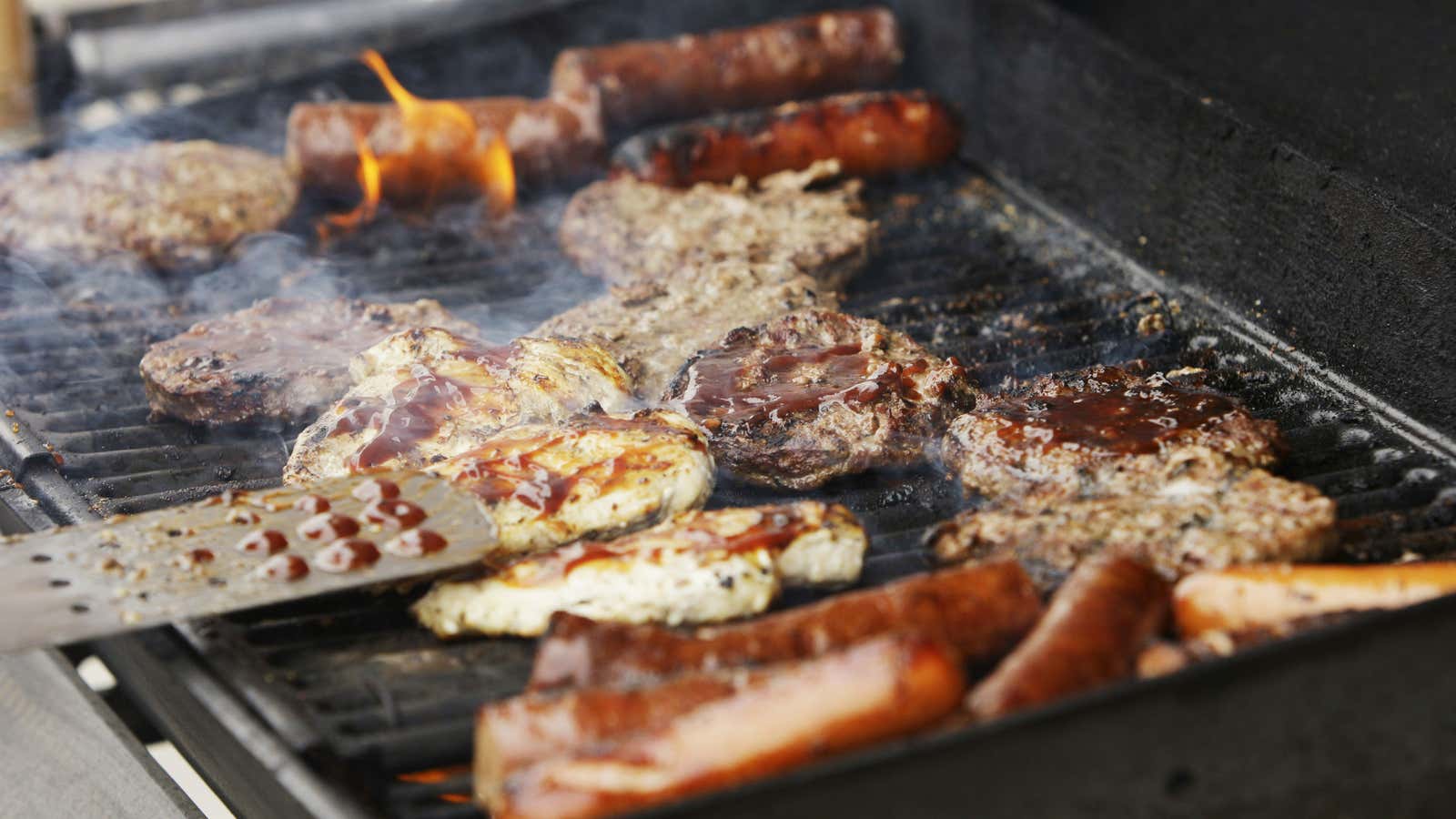Memorial Day in the US kicks off the unofficial start of summer. To celebrate the sun and warm weather, Americans will open their pools and fire up their backyard grills. Quartz caught up with Jack Bischop, the creative director at America’s Test Kitchen, a food lab in Boston, to talk about the easiest ways to ensure your summer barbecue is as good as it can be.
- Charcoal versus gas? Doesn’t matter. It turns out, a grill is a grill is a grill is a grill. At the end of the day, what matters most is that you’re cooking your meat thoroughly, which means 145°F (about 63°C) for beef, lamb, and pork and 165°F for poultry, according to the FDA. Whether or not you prefer a charcoal grill really comes down to how much you enjoy tinkering, said Bishop. Charcoal grills require more constant work to make sure the heat is properly tended to, which can be challenging in the wind, rain, or colder temperatures. The only time charcoal grills have an advantage, he said, is when you’re really looking for a smokier flavor on slow-cooked cuts, like pork shoulders or round.
- Dimple your burgers. When you’re making burgers, putting a little dimple in the top will ensure that the patty will be flat once it cooks. If the burger is three-quarters of an inch thick, the dimple should be in the center at just a quarter of an inch deep. “What’s happening is the connective tissue starts to shrink when the temp of the burger is about 140°F,” said Bishop. He explained that on a grill, the sides of the burger are going to heat up much more quickly than the center; as they do, the connective tissue in the meat, also known as collagen, tightens up.
- Thaw your meat. You should always do it in the refrigerator, rather than just out on a counter top. (Thawing meat on a countertop is basically like growing a petri dish of bacteria.) If you do forget to take out your meat ahead of time, there’s another way to thaw it quickly, provided your cuts are relatively thin, like chicken breasts, steak, or smaller cuts of pork. Bishop recommends putting individual frozen cuts into a bag or pot of water heated to 140°F and leaving for eight to 12 minutes before grilling.
- Bones bring out better flavor. “Juicy meat is better with bone-in cut versus same cut [without a bone],” he said. In addition to their own marrow flavor, bones have a lot of collagen, which, when heated, turn into gelatin, he explained. This gelatin can pick up other juices in the meat, and help spread the flavor through the rest of the cut.
- Marinades aren’t worth it. “Most are useless,” said Bishop. He said that even after marinating a piece of meat for 24 hours, the sauce won’t penetrate more than an eighth of an inch. Although the acid in some marinades can break down the outside of the meat, they won’t actually tenderize the entire cut. If you’re going to use a marinade, he recommends prepping meats with salt, either as a brine or with olive oil and garlic. Salt can actually penetrate further into meat because of osmosis, a process in which particles tend to migrate from where there are many of them (in this case, the outside of the meat), to where there are fewer of them (inside the meat).
Happy grilling!
